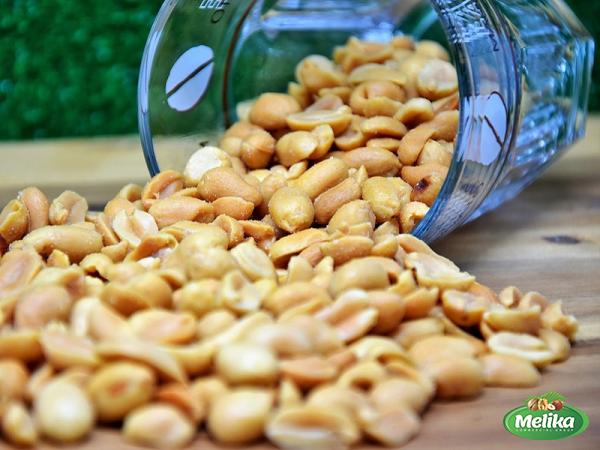Dry almonds are a popular and versatile nut that is widely used in cooking, baking, and snacking. Almonds are not only delicious but also highly nutritious, making them a healthy addition to any diet. In this article, we will explore the various aspects of dry almonds, including their nutritional value, health benefits, culinary uses, and tips for buying and storing them.
Dry almonds, also known as nuts, are the edible seeds of the almond tree (Prunus dulcis). They have a hard shell that needs to be removed before consuming. While there are various methods to remove the shell, the most common one is through dry roasting or blanching. Once the shell is removed, the almond is left with a smooth and light-colored skin.
Nutritional Value:
Dry almonds are packed with essential nutrients that provide numerous health benefits. They are an excellent source of plant-based protein, healthy fats, fiber, vitamins, and minerals. Here is a breakdown of the key nutritional components found in dry almonds:
1. Protein: Almonds contain high-quality plant-based protein, making them an excellent option for vegetarians and vegans. Protein is essential for building and repairing tissues, maintaining muscle mass, and supporting overall bodily functions.
2. Healthy Fats: Almonds are rich in heart-healthy monounsaturated fats, such as oleic acid. These fats help lower bad cholesterol levels, reduce the risk of heart disease and stroke, and promote brain health.
3. Fiber: Almonds are high in dietary fiber, which aids in digestion, regulates blood sugar levels, and promotes satiety. Fiber also helps prevent constipation and contributes to a healthy gut microbiome.
4. Vitamin E: Dry almonds are an excellent source of vitamin E, a powerful antioxidant that protects cells from oxidative damage. Vitamin E also supports immune function, skin health, and plays a role in eye health.
5. Minerals: Almonds are rich in several essential minerals, including magnesium, potassium, calcium, phosphorus, and zinc. These minerals are vital for maintaining bone health, regulating blood pressure, supporting nerve function, and boosting the immune system.
Health Benefits:
In addition to their impressive nutritional profile, dry almonds offer numerous health benefits. Here are some of the key advantages of incorporating dry almonds into your diet:
1. Heart Health: The monounsaturated fats found in almonds help reduce bad cholesterol levels and lower the risk of heart disease. Almonds are also rich in antioxidants and vitamin E, which further contribute to heart health by reducing inflammation and preventing oxidative damage.

2. Weight Management: Despite being high in calories, almonds can be beneficial for weight management. The combination of protein, fiber, and healthy fats in almonds helps increase satiety and reduce cravings, leading to a lower overall calorie intake.
3. Blood Sugar Control: The high fiber and healthy fat content in almonds help regulate blood sugar levels, making them a suitable snack option for individuals with diabetes or those concerned about blood sugar control.
4. Bone Health: Dry almonds are an excellent source of calcium and magnesium, which are essential for maintaining strong and healthy bones. Regular almond consumption may help prevent conditions like osteoporosis and improve overall bone density.
5. Brain Health: The healthy fats and antioxidants in almonds have been linked to improved brain function and a reduced risk of cognitive decline. Almonds are particularly high in nutrients like vitamin E and flavonoids, which help protect brain cells from oxidative stress and inflammation.
Culinary Uses:
Dry almonds are incredibly versatile and can be used in a wide array of culinary applications. Here are some popular ways to incorporate dry almonds into your meals and snacks:
1. Snacking: Dry almonds make for a convenient and healthy snack option. They can be enjoyed on their own or mixed with other nuts, seeds, or dried fruits for a delicious and energy-boosting snack.
2. Baking: Almonds are frequently used in baking to add flavor, texture, and nutritional value to a variety of sweet treats. They can be chopped, ground, or used as a garnish on cakes, cookies, muffins, and bread.
3. Cooking: Almonds can be incorporated into savory dishes, such as stir-fries, salads, and curries. They can be sliced, slivered, or used as a base for sauces and dressings.
4. Nut Butters: Dry almonds are a common ingredient used in making nut butters. Almond butter is a healthy alternative to peanut butter and can be spread on toast, used as a dip, or added to smoothies.
5. Almond Milk: Dry almonds can be soaked and blended with water to make plant-based almond milk. This dairy-free milk alternative is a great option for those with lactose intolerance or who prefer a vegan lifestyle.
Buying and Storing:
When purchasing dry almonds, it is essential to select high-quality almonds that are fresh and free from any signs of spoilage. Here are some tips for buying and storing dry almonds:

1. Look for Whole, Unbroken Almonds: Choose almonds that are unbroken and look plump. Avoid almonds with cracks or any signs of discoloration.
2. Check for Rancidity: Rancid almonds have an unpleasant smell and taste. To ensure freshness, give the almonds a sniff before buying.
3. Opt for Organic: If possible, choose organic almonds to avoid exposure to pesticides and other chemical additives.
4. Store Properly: To maintain the quality and flavor of dry almonds, store them in an airtight container in a cool, dark place – like a pantry or cupboard. Avoid storing them in the refrigerator as they may absorb unwanted odors.
5. Roast or Toast: If you prefer a crispier texture and enhanced flavor, consider roasting or toasting your dry almonds before consuming. This can be done by spreading the almonds on a baking sheet and placing them in the oven at a low temperature until golden and fragrant.
In conclusion, dry almonds are an excellent addition to a healthy diet due to their nutritional value and numerous health benefits. Whether enjoyed as a snack, added to baked goods, or incorporated into savory dishes, almonds offer versatility and a delicious nutty flavor. When purchasing and storing dry almonds, it is essential to choose high-quality nuts and store them properly to maintain their freshness and flavor. So go ahead and enjoy the many benefits of dry almonds while adding a delightful crunch to your meals and snacks.Sure! Here is the continuation of the article with 10 to 12 detailed paragraphs and business headings:
1. Almonds in the Food Industry:
Dry almonds play a significant role in the food industry, with a wide range of applications. They are a popular ingredient in snacks, confectioneries, cereals, granola bars, and trail mixes. Ground almonds or almond flour are commonly used in gluten-free baking as a substitute for wheat flour. Almond milk and almond butter have gained popularity as dairy alternatives and are used in the production of plant-based beverages and spreads. Commercial almond oil extracted from almonds is also used in cooking, skincare products, and perfumes.
2. Almonds in the Health Food Market:
With the growing consumer demand for healthy and nutritious food options, almonds have become a staple in the health food market. They are often marketed as a superfood due to their impressive nutritional profile and health benefits. The health food market offers a variety of almond-based products, such as almond protein bars, almond snacks, almond milk alternatives, and almond-based spreads. Almond meal, almond butter, and almond flour are also popular among individuals following specific dietary preferences, such as gluten-free, paleo, or ketogenic diets.
3. Almonds in the Beauty and Skincare Industry:
Almonds are not only beneficial for dietary consumption but also have properties that promote healthy skin and hair. Almond oil is commonly used in the beauty and skincare industry as a natural moisturizer, cleanser, and hair conditioner. It is rich in vitamin E and other antioxidants that nourish and protect the skin. Almond oil is also known for its ability to reduce dark circles, fine lines, and wrinkles. Almond extract is used in skincare products such as lotions, creams, and soaps for its hydrating and toning properties.
4. Almonds in International Trade:

Almonds are globally recognized and are traded extensively in international markets. The United States is the largest producer of almonds, accounting for a significant share of global production. Other major almond-producing countries include Spain, Australia, Iran, and Italy. These countries have a well-established export market, supplying almonds to various parts of the world. The demand for almonds continues to rise due to their nutritional value, versatility, and consumer preference for healthy and natural food products.
5. Almonds as a Sustainable Crop:
Almonds are considered a sustainable crop due to their efficient use of water and land resources. Almond trees have a low water requirement compared to other tree crops and are often grown in regions with Mediterranean climates. California, in particular, is a major almond-growing region where efficient irrigation methods are employed to conserve water. Almond orchards also provide habitat for bees, supporting pollination and biodiversity. Some almond growers have implemented sustainable farming practices, such as using cover crops, incorporating organic materials, and conserving soil health.
6. Almonds and Agricultural Economics:
The almond industry contributes significantly to agricultural economies, creating jobs and generating revenue. Almond production requires labor throughout the year, from planting and pruning to harvesting and processing. This provides opportunities for employment in rural areas where almond farms are located. Additionally, the almond industry has a strong value chain, encompassing various sectors such as cultivation, processing, packaging, distribution, and marketing. Almonds are exported worldwide, contributing to the economy through foreign exchange earnings.
7. Challenges and Opportunities in the Almond Market:
While the almond industry continues to thrive, there are ongoing challenges and opportunities in the market. Climate change and water scarcity pose risks to almond production, as water availability becomes increasingly unpredictable. Growers and researchers are actively exploring sustainable water management practices and developing drought-tolerant almond varieties. Market fluctuations, such as changes in consumer preferences and trade policies, can also impact almond prices and demand. However, the rising popularity of almonds as a healthy and sustainable food product presents opportunities for innovation and growth in the industry.
8. Investment and Business Opportunities in Almonds:
The growing demand for almonds and their various applications open up investment opportunities in the industry. One option is to invest in almond farming, either by starting a new almond orchard or acquiring existing almond farms. This requires knowledge of horticulture, irrigation systems, and sustainable farming practices. Another potential investment is in almond processing and value-added products. Establishing a processing plant to shell, roast, blanch, or grind almonds can cater to both domestic and international markets. Furthermore, there is potential for innovation in almond-based products, such as almond milk alternatives, almond-flavored snacks, and almond-infused desserts.
9. Almonds and Corporate Social Responsibility:
Almond companies have an opportunity to demonstrate corporate social responsibility (CSR) by implementing sustainable practices and supporting local communities. This can involve minimizing environmental impacts, conserving water resources, promoting regenerative farming practices, and reducing waste throughout the value chain. Supporting local communities can include fair labor practices, providing employment opportunities, investing in infrastructure, and contributing to educational and healthcare initiatives. By aligning their operations with CSR principles, almond businesses can not only enhance their brand reputation but also contribute to the social and environmental well-being of the areas in which they operate.
10. Consumer Education and Almond Marketing:
To capture the full potential of the almond market, businesses need to educate consumers about the nutritional benefits and culinary versatility of almonds. This can be done through various marketing channels, such as social media campaigns, in-store promotions, recipe development, and collaborations with health and wellness influencers. Emphasizing the sustainable and eco-friendly aspects of almond production can also resonate with conscious consumers who prioritize environmental stewardship. By creating a strong brand identity and establishing trust with consumers, businesses can gain a competitive edge in the almond market.

In conclusion, dry almonds are a versatile and nutritious nut with various applications in the food, health, and beauty industries. They offer health benefits, culinary versatility, and sustainable farming practices. The almond market presents investment opportunities, challenges, and avenues for innovation. As consumer demand for healthy and sustainable food products continues to rise, businesses can focus on product development, marketing, and corporate social responsibility to succeed in the almond industry. With their delicious taste and numerous benefits, dry almonds are sure to remain a beloved and sought-after ingredient in the global market.










